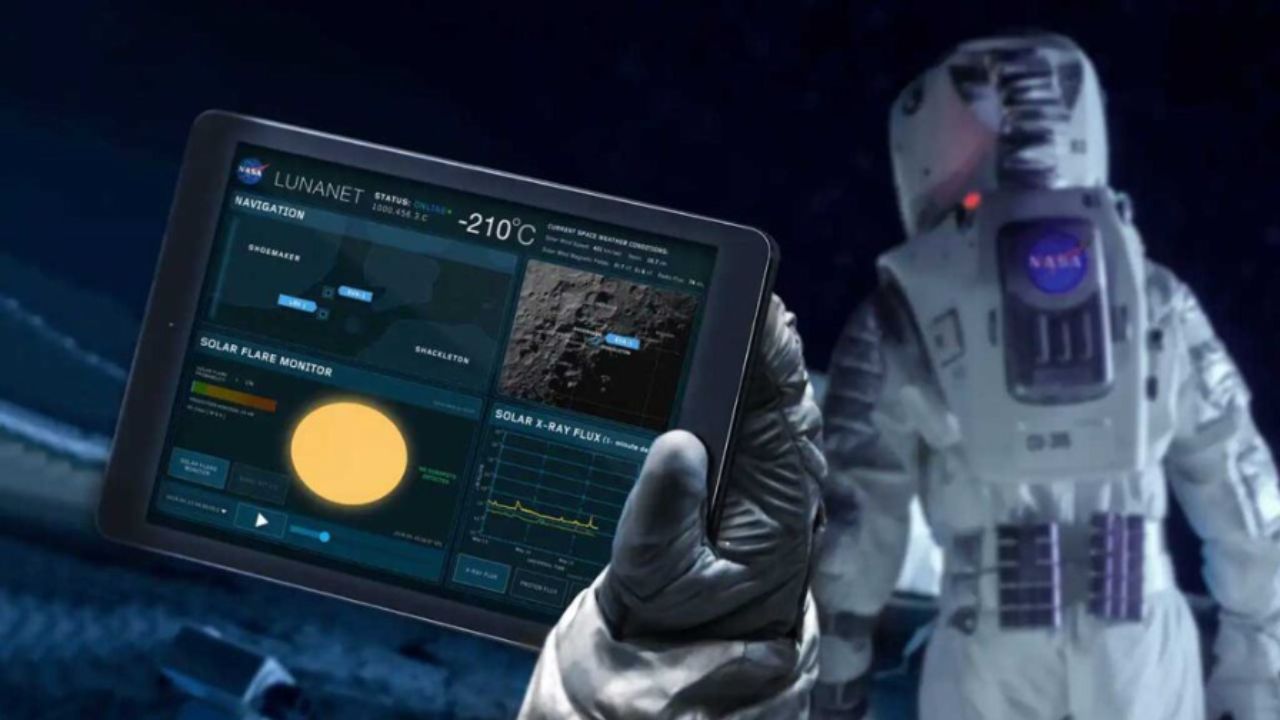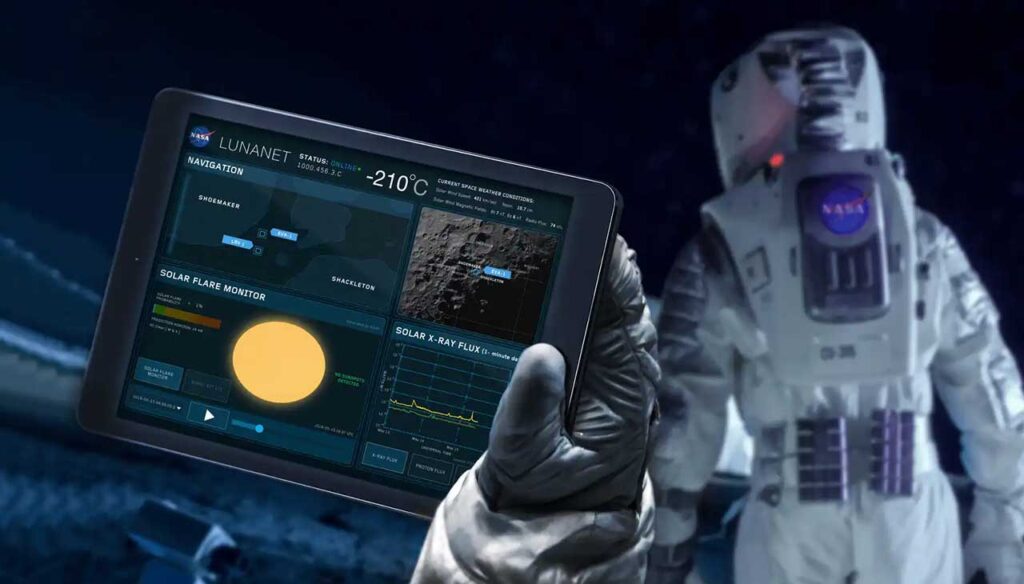Advancing Technology for Interplanetary Internet

The future LunaNet will bring terrestrial Internet capabilities to astronauts, rovers, and orbiters.
Media Credit: NASA/Reese Patillo
ISS National Lab-sponsored research paves the way for future space communications—learn more in the latest issue of Upward magazine
October 30, 2025
KENNEDY SPACE CENTER (FL), October 30, 2025 – For future missions on commercial space stations, the Moon, and Mars, the ability to send data and communications across the solar system will be crucial. But developing an interplanetary Internet is challenging. The long distances data must travel cause delays, and the movement of planets and spacecraft leads to signal disruptions.
To address these challenges, Spatiam Corporation developed a commercial platform for space communications based on Delay and Disruption Tolerant Networking (DTN). The platform stores data bundles at intermediate nodes in the network until a path to the next node or final destination is available. Spatiam needed to confirm its platform worked in space, and the International Space Station (ISSInternational Space Station) National Laboratory provided the optimal test bed.
Learn more about this important technology and hear from Vint Cerf, one of the two “Fathers of the Internet” who co-led the development of DTN, in the latest issue of Upward, official magazine of the ISS National Lab. Read the feature article “Interplanetary Internet” to see how Spatiam is helping to shape the future of networking in space.
“The TCP/IP protocols we created for the terrestrial Internet work well in a relatively low-latency, high-connectivity environment, but they’re not so attractive when you get to the deep space environment,” Cerf told Upward.
Spatiam co-founder and CEO Alberto Montilla explains in the article, “The ISS was the ideal place to demonstrate our DTN platform for interplanetary networking because it provides a real-life operational scenario.”
Through its successful ISS National Lab-sponsored demonstration, Spatiam raised the technology readiness level(Abbreviation: TRL) A measurement system used to assess the maturity level of a particular technology. There are nine technology readiness levels, and technology progresses from TRL 1 to TRL 9. of its platform to TRL 7, which is one step away from flight certification. Earlier this month, Spatiam discussed the project and its exciting results at the Space Software Summit in Boulder, Colorado.
“The most important thing for us as a company is being able to gain the operational experience to manage networks in space, and having access to that through the ISS National Lab was a fantastic opportunity,” Montilla says in Upward.
Explore more groundbreaking results enabled by the ISS National Lab at ISSNationalLab.org/Upward.
Download a high-resolution image for this release: Future Internet Capabilities in Space
# # #
About the International Space Station (ISS) National Laboratory:
The International Space Station (ISS) is a one-of-a-kind laboratory that enables research and technology development not possible on Earth. As a public service enterprise, the ISS National Laboratory® allows researchers to leverage this multiuser facility to improve quality of life on Earth, mature space-based business models, advance science literacy in the future workforce, and expand a sustainable and scalable market in low Earth orbit(Abbreviation: LEO) The orbit around the Earth that extends up to an altitude of 2,000 km (1,200 miles) from Earth’s surface. The International Space Station’s orbit is in LEO, at an altitude of approximately 250 miles.. Through this orbiting national laboratory, research resources on the ISS are available to support non-NASA science, technology, and education initiatives from U.S. government agencies, academic institutions, and the private sector. The Center for the Advancement of Science in Space® (CASIS®) manages the ISS National Lab, under Cooperative AgreementA cooperative agreement is Federal assistance that establishes a relationship between the U.S. Government and a recipient in which the principal purpose of the relationship is to accomplish a public purpose of support or stimulation. Since 2011, the Center for the Advancement of Science in Space™ (CASIS™) has managed the National Laboratory® through a Cooperative Agreement with NASA. with NASANational Aeronautics and Space Administration, facilitating access to its permanent microgravityThe condition of perceived weightlessness created when an object is in free fall, for example when an object is in orbital motion. Microgravity alters many observable phenomena within the physical and life sciences, allowing scientists to study things in ways not possible on Earth. The International Space Station provides access to a persistent microgravity environment. research environment, a powerful vantage point in low Earth orbit, and the extreme and varied conditions of space. To learn more about the ISS National Lab, visit our website.
As a 501(c)(3) nonprofit organization, CASIS(Abbreviation: CASIS™) The nonprofit organization that manages the ISS National Lab, which receives at least 50 percent of the U.S. research allocation on the International Space Station to facilitate research that benefits humanity (NASA manages the other 50% and focuses on research for space exploration purposes). accepts corporate and individual donations to help advance science in space for the benefit of humanity. For more information, visit our donations page.
